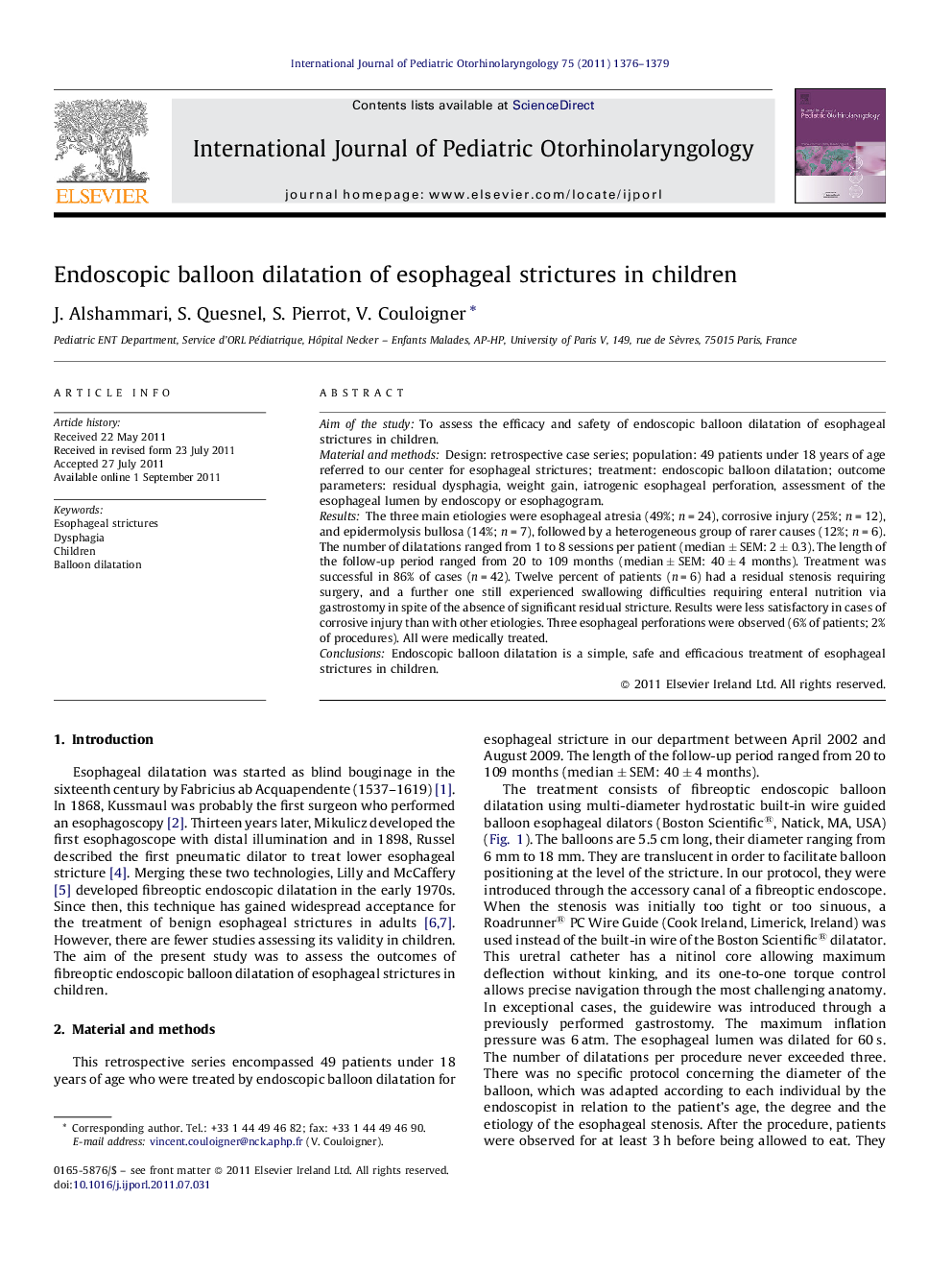| Article ID | Journal | Published Year | Pages | File Type |
|---|---|---|---|---|
| 4112713 | International Journal of Pediatric Otorhinolaryngology | 2011 | 4 Pages |
Aim of the studyTo assess the efficacy and safety of endoscopic balloon dilatation of esophageal strictures in children.Material and methodsDesign: retrospective case series; population: 49 patients under 18 years of age referred to our center for esophageal strictures; treatment: endoscopic balloon dilatation; outcome parameters: residual dysphagia, weight gain, iatrogenic esophageal perforation, assessment of the esophageal lumen by endoscopy or esophagogram.ResultsThe three main etiologies were esophageal atresia (49%; n = 24), corrosive injury (25%; n = 12), and epidermolysis bullosa (14%; n = 7), followed by a heterogeneous group of rarer causes (12%; n = 6). The number of dilatations ranged from 1 to 8 sessions per patient (median ± SEM: 2 ± 0.3). The length of the follow-up period ranged from 20 to 109 months (median ± SEM: 40 ± 4 months). Treatment was successful in 86% of cases (n = 42). Twelve percent of patients (n = 6) had a residual stenosis requiring surgery, and a further one still experienced swallowing difficulties requiring enteral nutrition via gastrostomy in spite of the absence of significant residual stricture. Results were less satisfactory in cases of corrosive injury than with other etiologies. Three esophageal perforations were observed (6% of patients; 2% of procedures). All were medically treated.ConclusionsEndoscopic balloon dilatation is a simple, safe and efficacious treatment of esophageal strictures in children.
